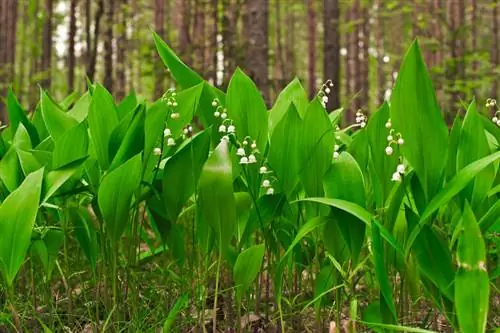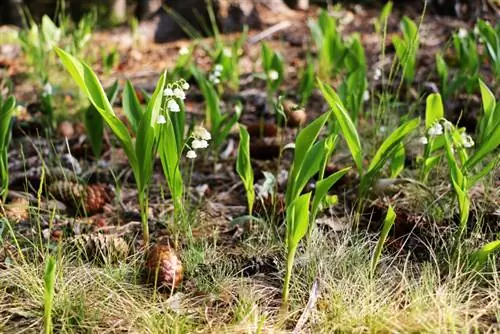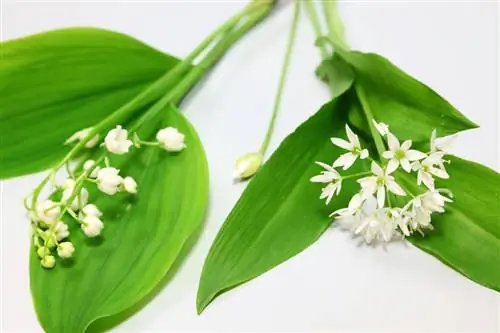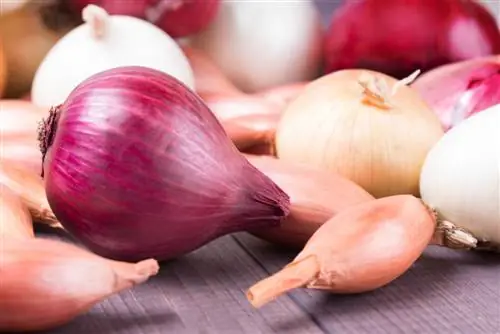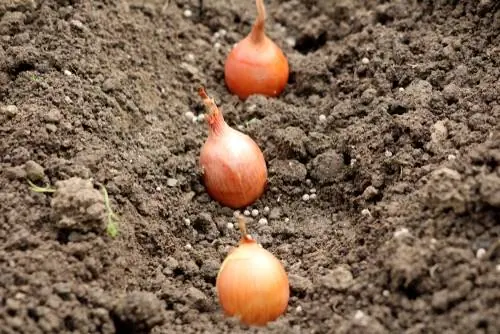- Author admin [email protected].
- Public 2023-12-16 16:46.
- Last modified 2025-01-23 11:20.
If you want to buy lily of the valley for the garden, you can usually find them among the flower bulbs in the hardware store. The lily of the valley has no bulbs at all, but grows from rhizomes. Unlike snowdrops and tulips, lily of the valley is a perennial and not a bulbous plant.
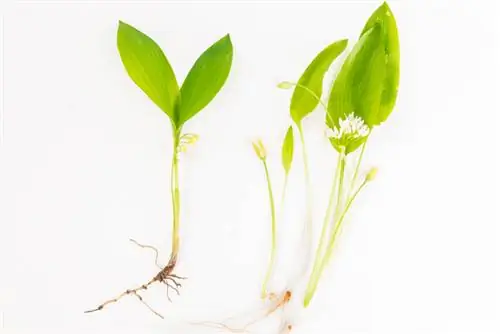
Are lilies of the valley bulbous or rhizome plants?
Lilies of the valley are not bulbous plants, but perennials that grow from rhizomes. Rhizomes are storage organs with many eyes from which the lilies of the valley sprout. These plants spread through the garden via rhizomes, unlike bulbous plants.
Lily of the valley grows from rhizomes not bulbs
If you look at the root of a lily of the valley, you will see the difference immediately. It is a root with slight thickenings. The thickenings are called rhizomes. They are storage organs in which the nutrients for leaves and flowers are collected.
Bulbs of tulips and other flowers have a different shape. At the bottom you can see fine roots, while at the top you can see an eye from which the flower sprouts.
Lily of the valley rhizomes have many eyes. A lily of the valley can emerge from anyone.
Bulbs form daughter plants, you can divide rhizomes
The difference is also evident in propagation. Flower bulbs reproduce through daughter bulbs that grow close to the mother plant. The daughter bulbs can be separated and replanted.
Pierce the rhizomes of the lily of the valley in the middle or break them into several parts. As long as an eye remains on each section, new lilies of the valley will grow from them.
Since rhizomes spread much more widely in the garden, you should always create a rhizome barrier (€37.00 at Amazon) before planting lily of the valley to keep the perennial under control. Once the lilies of the valley have spread widely throughout the garden, they can hardly be removed permanently.
What you need to pay attention to when planting bulbs and rhizomes
- Dig planting hole
- Improve soil with compost
- Insert the onion or rhizome the right way up
- fill up earth
- come carefully
If you place rhizomes or flower bulbs the wrong way around in the planting hole, the plant will initially sprout in the wrong direction. It takes a very long time for the shoot to find its way up. It often rots before it reaches the surface.
Tip
Onion plants do not spread across the entire garden nearly as quickly as a perennial with rhizomes. The rhizomes form many runners that sprout further away from the mother plant.


